- HOME
- ITSM Analytics
- 5 ways your bots are costing you and how to fix them using analytics
5 ways your bots are costing you and how to fix them using analytics
- Last Updated: July 1, 2024
- 499 Views
- 5 Min Read

More workplaces are reaping the benefits of automation as the digital era advances and enter its full-grown phase. One such automation technique is chatbots. Though chatbots have been in existence for a while, it is only in recent years that they have gained traction and developed into effective tools for automation.
In IT help desks, chatbots are helpful for interacting with users, addressing their problems, responding to questions, assigning requests to technicians, and displaying knowledge-base solutions. In short, chatbots can help cut down technicians' workloads and reduce operational expenses. The flip side of this automation is that when bots aren't implemented effectively they can shoot up your service costs and increase workload.
In this blog, we'll walk you through a few common bot implementation mistakes that are costing you and discuss how to prevent them using analytics.
1: Implementing chatbots at the wrong time
Bots provide effective, round-the-clock, and one-on-one support by handling simple and repetitive requests, guiding end users to the appropriate KB, and saving technicians time when the help desk is overwhelmed with tickets. Generally speaking, the right time to implement bots to your help desk is when at least 30% of your help desk tickets are first call resolution (FCR) marked. Implementing bots too early will only lead to requests being reopened and reassigned to technicians, which will then increase the resolution time and cost per ticket. Waiting too long to implement bots means you're missing out on opportunities for cost savings.
Scenario 1: Implementing too early
When bots are implemented too early—that is, when your help desk's FCR rate is less than 30%—it means requests are either complex or service processes are a bit unrefined for bots. Either way, introducing bots too early will not help you achieve the intended bottom-line ROI benefits.
The report below is an example to outline how this scenario will play out. Nearly 20-25% of the total requests addressed by bots first were reopened only to be attended by technicians. This indicates it was too early to bring in bots to this help desk.
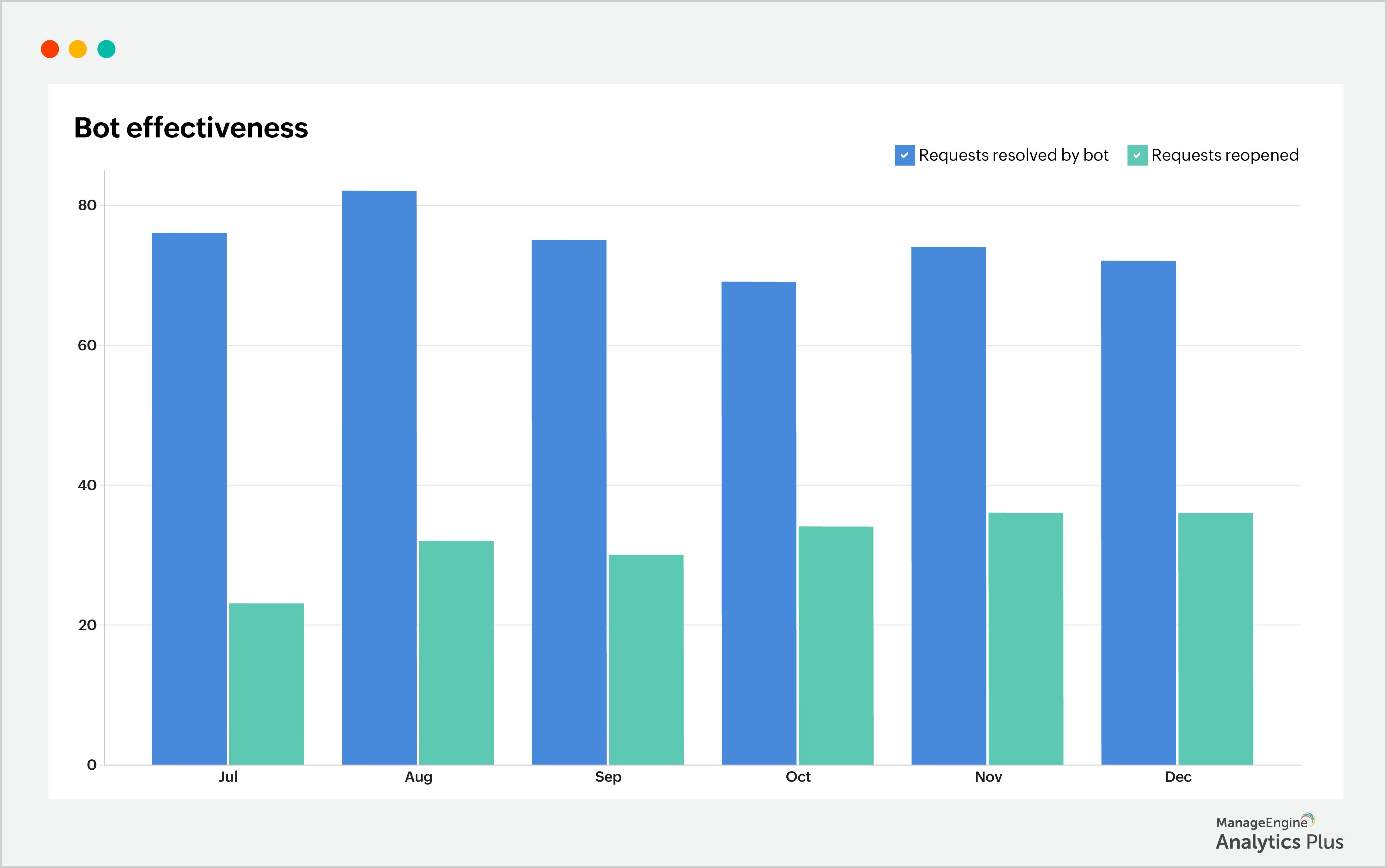
Scenario 2: Implementing too late
Here's another scenario: When your help desk team resolves more than 30% of requests through FCR. The longer you wait to implement chatbots after reaching this threshold, the more savings you're missing out on. Here's an example report that shows how much you could have saved if you had implemented bots when 30% of your help desk tickets were FCR marked.
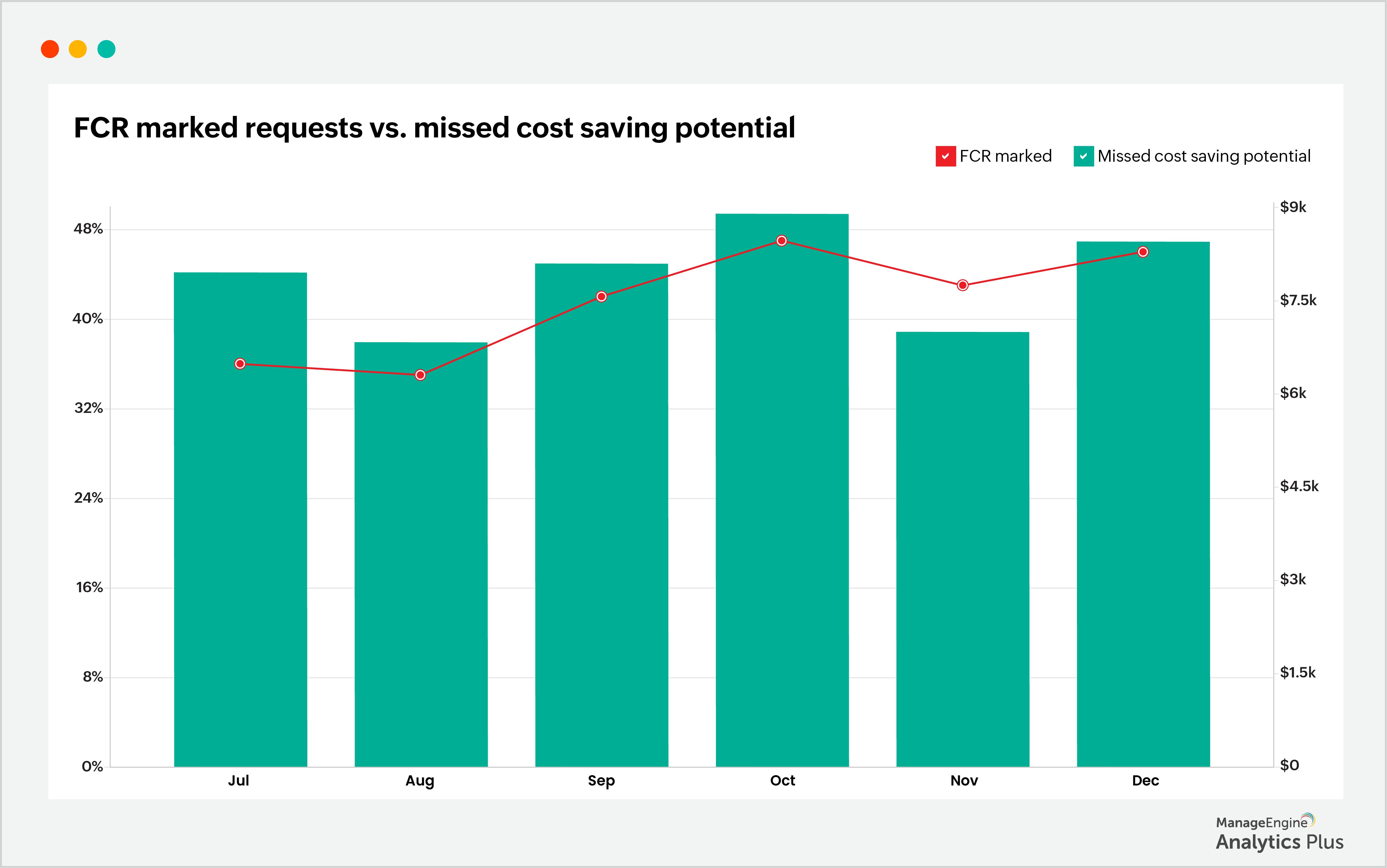
2: Over-relying on bots as the first line of support
Over the last few years, most organizations and sectors have started using chatbots to resolve repetitive and simple help desk requests. Some organizations have even implemented bots as their first line of support for all incoming requests. However, this strategy might not be viable for all sectors. For instance, end users from the technology sector might be comfortable interacting with chatbots. While end users from sectors such as banking or e-commerce might prefer talking to a technician directly.
Studies also indicate that chatbots don't work for all end users, and in some cases, end users prefer the human touch. A survey to gauge your end users' experience with the bots will help you find out if they are happy and satisfied.
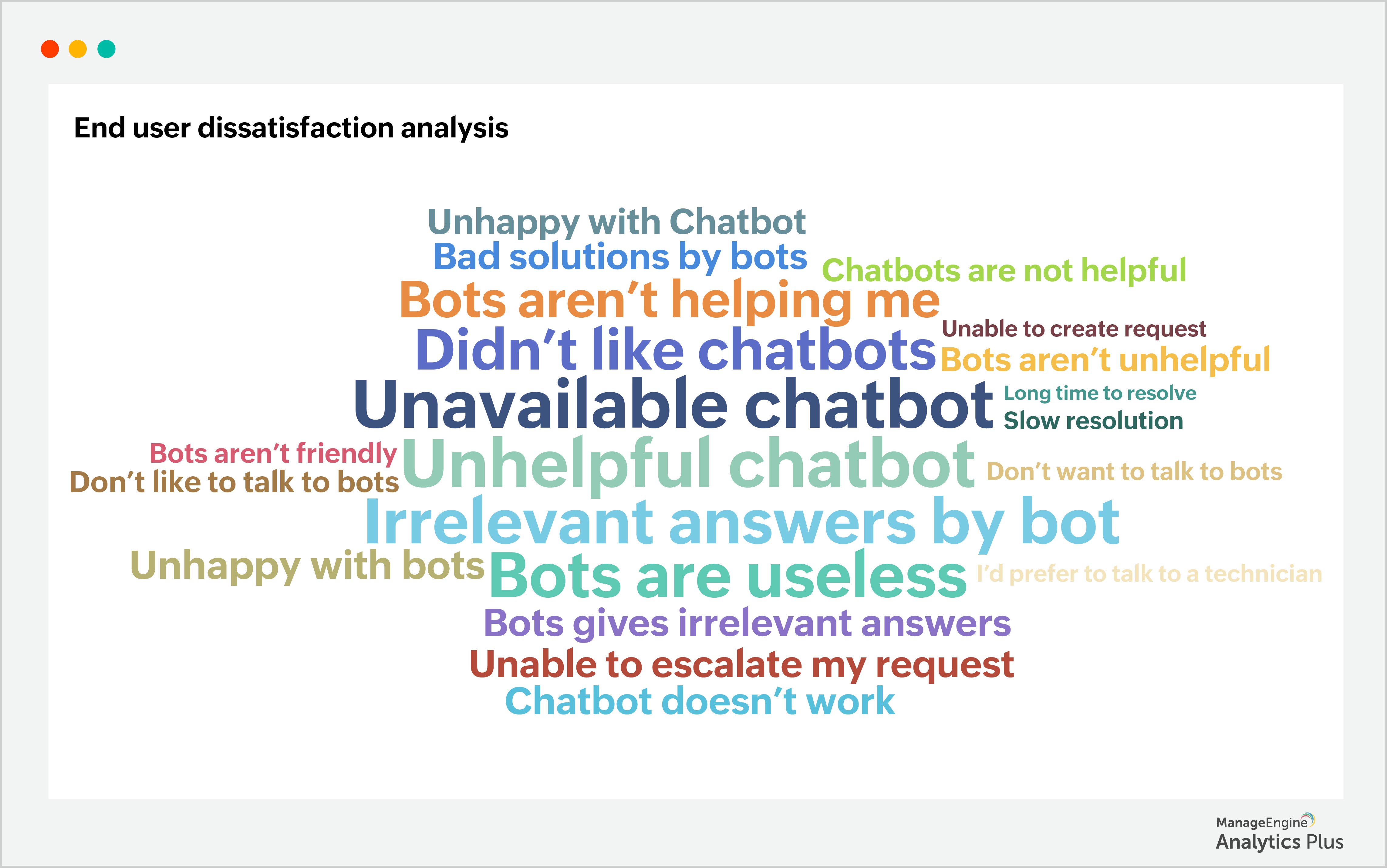
The sample keyword cloud report above highlights areas where users are dissatisfied with bot interactions. Most of the dissatisfaction is about users being unaccustomed to bots. This calls for urgent action from the help desk to nurture end users and provide them training to accept bots as part of the help desk solution team.
3: Enforcing bot-led self-service
Are the chatbots satisfying the needs of your end users? Bots are often used to resolve simple requests like password reset requests or to redirect end users to appropriate KBs when they need help with simple requests. However, complex requests that need human assistance should be redirected to the technicians.
Unfortunately, some organizations try to resolve every incoming request with the help of bots—which is nearly impossible. When end users pose a complex question to the bot, many bots just push back the KBs or FAQs instead of directly answering the question. This can feel like being given the entire haystack and being told to look for the needle rather than being handed the needle. One way to tackle this is to analyze the total number of incoming requests alongside the requests resolved by bots. Here's a sample report:
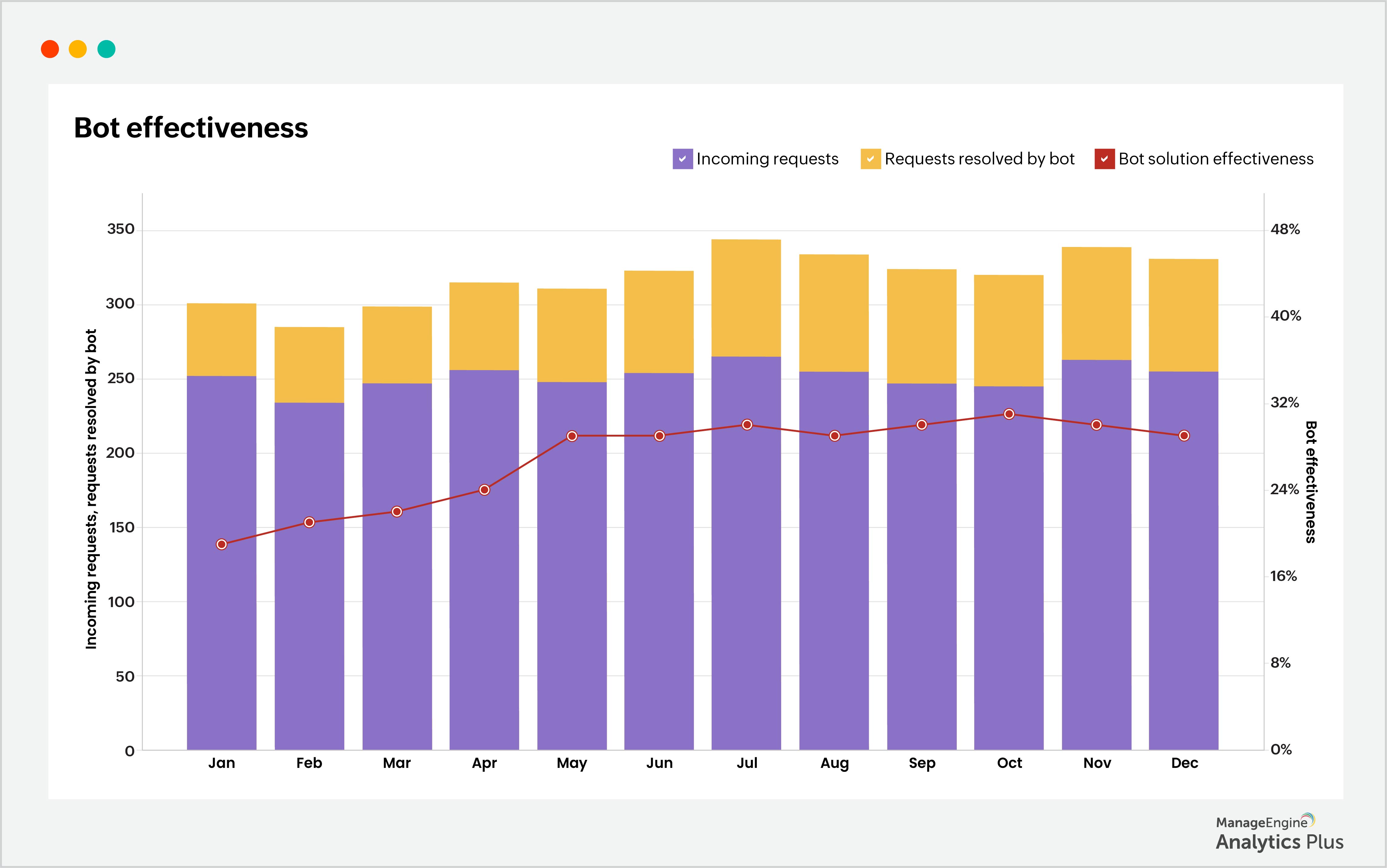
According to the report, in the first few months since bot implementation, bot effectiveness has steadily increased and reached the 30% mark. Beyond this, the efficiency of the bots has plateaued and not increased further.
If you notice this in your help desk, it's not a cause for alarm. Nor does it mean that your bots are losing effectiveness. It simply means that you've reached saturation with the level of bot implementation that's applicable to your industry or business. So, it's time to look at other avenues to make IT services faster and cheaper.
4: Not properly monitoring for chatbot responses
Having well-trained bots eases the help desk workload and reduces help desk costs. However, when the solutions provided by bots are not optimized and monitored periodically, they reduce end-user satisfaction and increase escalations. Monitoring chatbot responses, keeping tabs on failed bot conversations, and reviewing end-user surveys periodically to optimize the chatbot's performance is one way to reduce bot-related escalations. Here's an example report that shows how end-user satisfaction has come down and bot-related escalations have increased over the recent months.
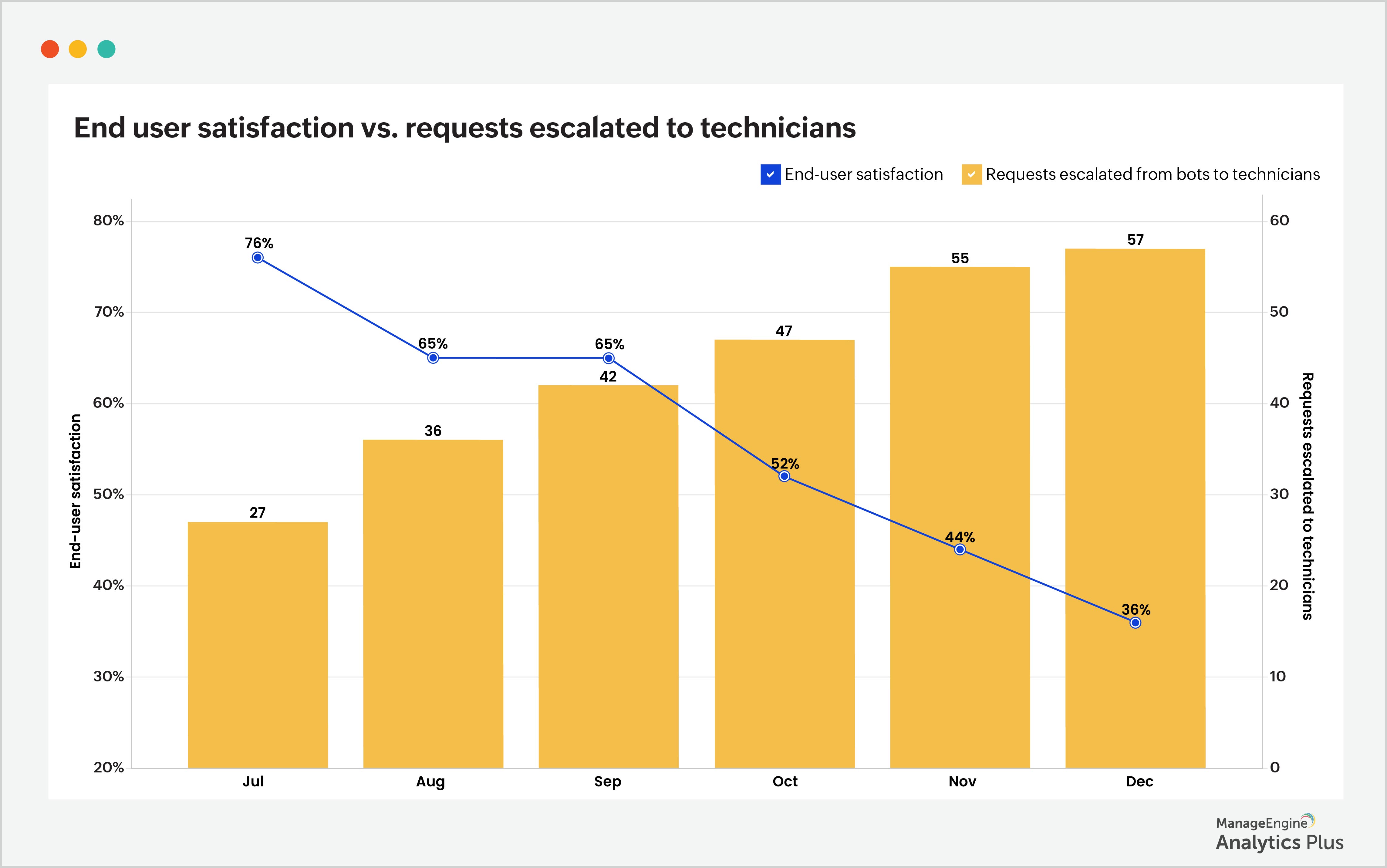
The information in the above report shines the light on the end-user dissatisfaction with bots and bot-related escalations which can be used to further investigate the areas that need improvement in your bot implementation.
5: Not properly testing bots before implementing them
Consider this scenario: you invested in chatbot software, programmed it, and it should work as intended. Great! However, your end users are still unhappy. What's more, there's a marked increase in ticket escalations and ticket reopens. This could be because bots were implemented without proper testing. Deploying a bot to deal with real end users requires detailed, real-life testing.
Even after properly testing the bot and deploying it, it should regularly be monitored to keep tabs on its efficiency so that you can make the required tweaks on time. Here's a scenario where the chatbot implementation has gone wrong due to a lack of bot testing before they were deployed.
A chatbot advised a 66-year-old UK woman that her weight loss and coughing up blood likely indicated a tapeworm, while she was worried it might be lung cancer. (Despite tapeworms being uncommon in the UK)
This may be a generic example, but it still highlights how bots can provide unhelpful solutions to end users. This stresses the need for constant and periodic monitoring of bot responses for quality and relevance to real-life problems.
The reports shown in this blog were built using Analytics Plus, ManageEngine's AI-enabled IT analytics application. If you'd like to create similar reports using your help desk data, try Analytics Plus for free.
Talk to our experts to discover all the ways you can leverage analytics to step up your help desk measures.





